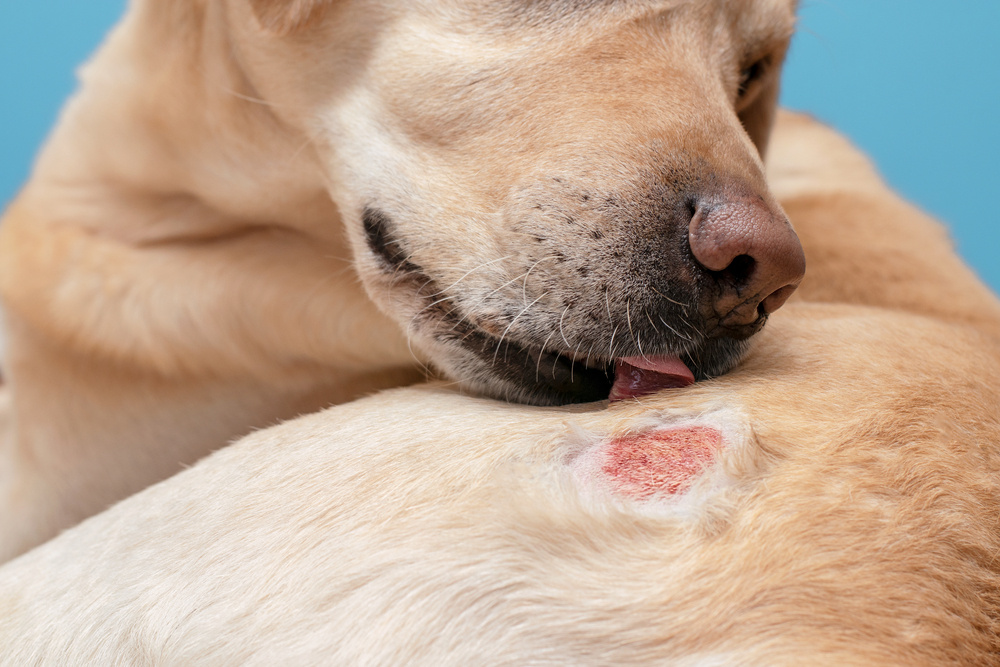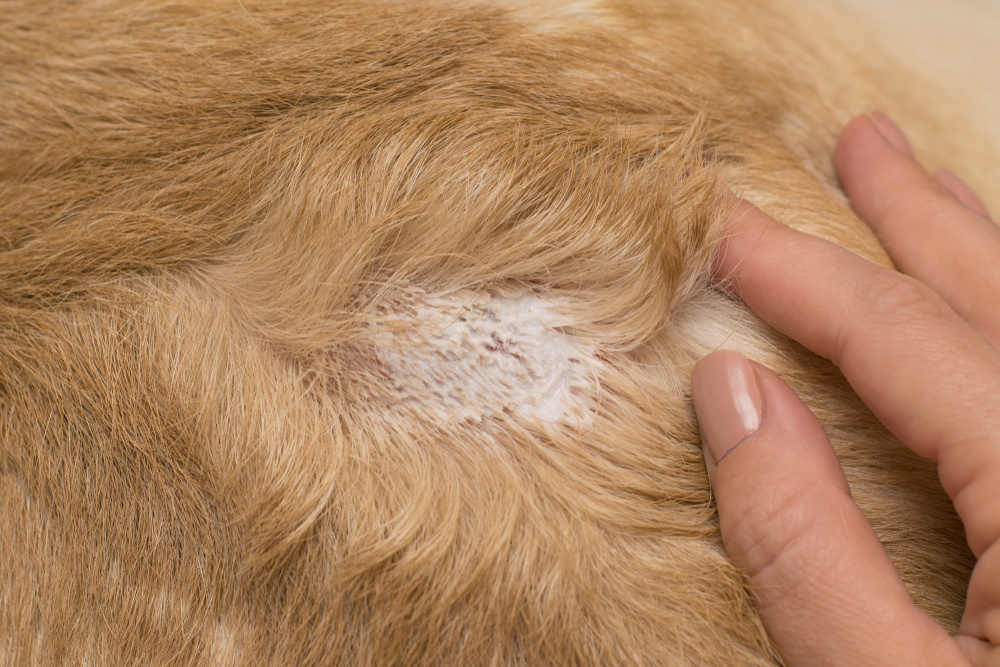
Wounds & Risk areas – Treatment and Prevention
Wound management is a critical aspect of veterinary dermatology, as skin injuries in pets can lead to complications such as infections, delayed healing, and chronic skin conditions. Whether caused by trauma, surgery, pressure sores, or underlying dermatological disorders, proper wound care is essential to promote healing, prevent microbial overgrowth, and minimize discomfort.
In addition to treating open wounds, it is also important to address risk areas—vulnerable regions of the body prone to injury, irritation, or secondary infections. These include pressure points, skin folds, interdigital spaces, and surgical sites, where moisture, friction, or microbial buildup can delay recovery and lead to chronic issues.
Common Types of Wounds in Pets
Wounds in dogs and cats can be classified based on their cause, depth, and healing process:
- Acute Traumatic Wounds: Result from bites, scratches, lacerations, abrasions, or blunt force trauma.
- Surgical Wounds: Clean incisions that require proper post-operative care to prevent infection and promote healing.
- Chronic or Non-Healing Wounds: Often associated with underlying conditions such as infections, pressure sores, or metabolic diseases.
- Burns & Ulcerations: Can be caused by thermal, chemical, or pressure-related damage, requiring specialized wound care approaches.
- Risk Areas Prone to Wound Development: Certain areas on a pet’s body are more susceptible to wounds, irritation, and secondary infections due to factors like friction, moisture retention, and anatomical structure:
- Skin Folds & Facial Wrinkles: Common in brachycephalic breeds, Bulldogs, and Shar-peis, where trapped moisture and bacteria increase the risk of dermatitis and infections.
- Interdigital Spaces & Paw Pads: Prone to abrasions, foreign body penetration, and bacterial or fungal infections.
- Elbows & Pressure Points: Large and older dogs are at risk of developing calluses, hygromas, and pressure sores from prolonged lying on hard surfaces.
- Surgical Sites & Post-Operative Wounds: Require careful management to prevent dehiscence, contamination, and delayed healing.
-

Preventing the animal from licking is crucial
-

We have products that both supports the skin and healing wounds
Key Strategies for Wound Management
Successful wound management involves a combination of cleaning, decontamination, protection, and stimulation of the healing process. A structured approach should include:
1. Wound Cleansing & Debridement
- Gentle cleansing with non-irritating antiseptic solutions (chlorhexidine, hypochlorous acid, or saline) to remove debris and bacteria.
- Mechanical or enzymatic debridement to remove necrotic tissue and promote healing in chronic or infected wounds.
2. Infection Control & Antimicrobial Protection
- Topical antimicrobial agents (chlorhexidine, silver sulfadiazine, honey-based dressings) to prevent bacterial colonization.
- Antifungal treatments when Malassezia or dermatophyte involvement is suspected.
- Systemic antibiotics or antifungals, if necessary, for deep or severely infected wounds.
3. Moist Wound Healing & Barrier Protection
- Hydrogel or hydrocolloid dressings to maintain an optimal moist healing environment and support epithelialization.
- Protective sprays and balms to shield delicate skin from external contaminants and promote tissue regeneration.
4. Prevention & Risk Area Management
- Regular skin fold cleaning with mild antiseptic wipes to prevent bacterial and yeast overgrowth.
- Moisturizing and barrier-supportive products to reduce dryness, cracking, and pressure sores.